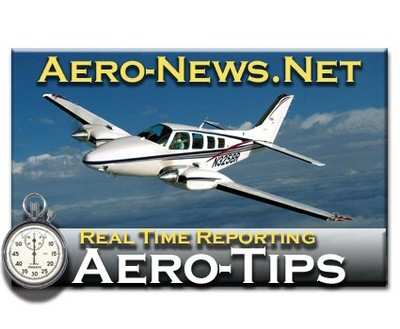Mon, Jun 26, 2006
Aero-Tips!
A good pilot is always learning -- how many times have you
heard this old standard throughout your flying career? There is no
truer statement in all of flying (well, with the possible exception
of "there are no old, bold pilots.")

Aero-News has called upon the expertise of Thomas P. Turner,
master CFI and all-around-good-guy, to bring our readers -- and us
-- daily tips to improve our skills as aviators. Some of them, you
may have heard before... but for each of us, there will also be
something we might never have considered before, or something that
didn't "stick" the way it should have the first time we memorized
it for the practical test.
Look for our daily Aero-Tips segments, coming each day to
you through the Aero-News Network.
Aero-Tips 06.25.06
Oh the irony! Pilots live for two things -- time in their
logbooks, and speed across the ground. The two goals are almost
counterproductive.
There are times when the Federal Aviation Administration (FAA)
kindly permits pilots of turbine and very high-performance
piston-engine airplanes more time to enjoy flight and to record in
their logbooks. Here are the speed limits for various
airspace:
- Unless otherwise authorized by the Administrator (i.e., you
have some sort of wavier from the FAA, for instance in an organized
air race), no person may operate an aircraft:
- below 10,000 feet MSL at an indicated airspeed of more than 250
knots (288 mph).
- at or below 2,500 feet above the surface within four nautical
miles of the primary airport of a Class C or Class D airspace area
at an indicated airspeed of more than 200 knots (230 mph.). This
limit does not apply if the airport is within Class B
airspace.
-
- Note: Air Traffic Control (ATC) can waive
the Class C/D speed limit for specific airplanes.
- in airspace underlying Class B airspace or in a VFR corridor
through Class B airspace at an indicated airspeed of more than 200
knots (230 mph).
All airspeeds are indicated. Read the airspeed indicator; don't
worry about True Air Speed in this context.
If the minimum safe airspeed for any particular operation is
greater than the maximum speed prescribed in this section, the
aircraft may be operated at that minimum speed.
Aero-tip of the day: As in all things aviation,
know your limits -- especially speed limits in various airspace, if
you fly a fast ship.
More News
We're Everywhere... Thanks To You! Even with the vast resources and incredibly far-reaching scope of the Aero-News Network, every now and then a story that should be reported on sl>[...]
“The Coast Guard anticipates new aircraft procurements may be based off Sikorsky’s MH-60R aircraft, which is the maritime variant of the H-60 in active production. Diff>[...]
Aero Linx: Classic Jet Aircraft Association (CJAA) The CJAA Formation and Safety Team (FAST) Mission is to be the sole authorized provider of formation training and certification f>[...]
During A Low Pass Over A Gravel Bar, The Airplane’S Tailwheel Impacted An Area Of Rough, Uneven Terrain Analysis: The pilot reported that he was flying low-level over various>[...]
Hold For Release Used by ATC to delay an aircraft for traffic management reasons; i.e., weather, traffic volume, etc. Hold for release instructions (including departure delay infor>[...]
 ANN FAQ: How Do I Become A News Spy?
ANN FAQ: How Do I Become A News Spy? Aero-News: Quote of the Day (10.28.25)
Aero-News: Quote of the Day (10.28.25) ANN's Daily Aero-Linx (10.28.25)
ANN's Daily Aero-Linx (10.28.25) NTSB Final Report: Aviat Aircraft Inc A-1B
NTSB Final Report: Aviat Aircraft Inc A-1B ANN's Daily Aero-Term (10.28.25): Hold For Release
ANN's Daily Aero-Term (10.28.25): Hold For Release



